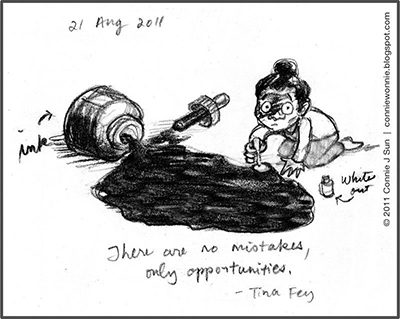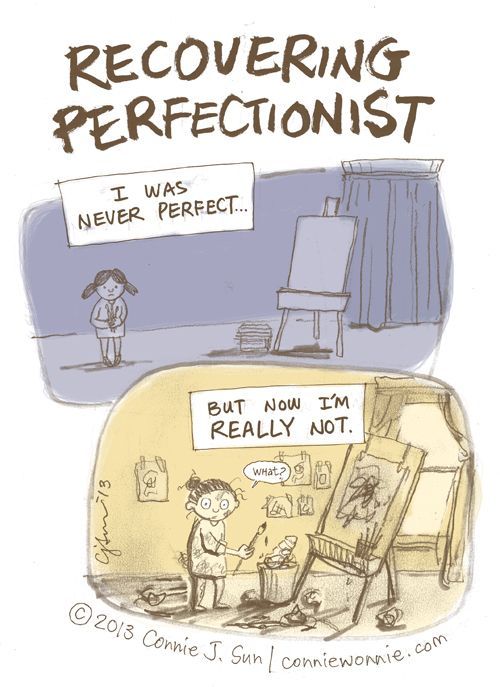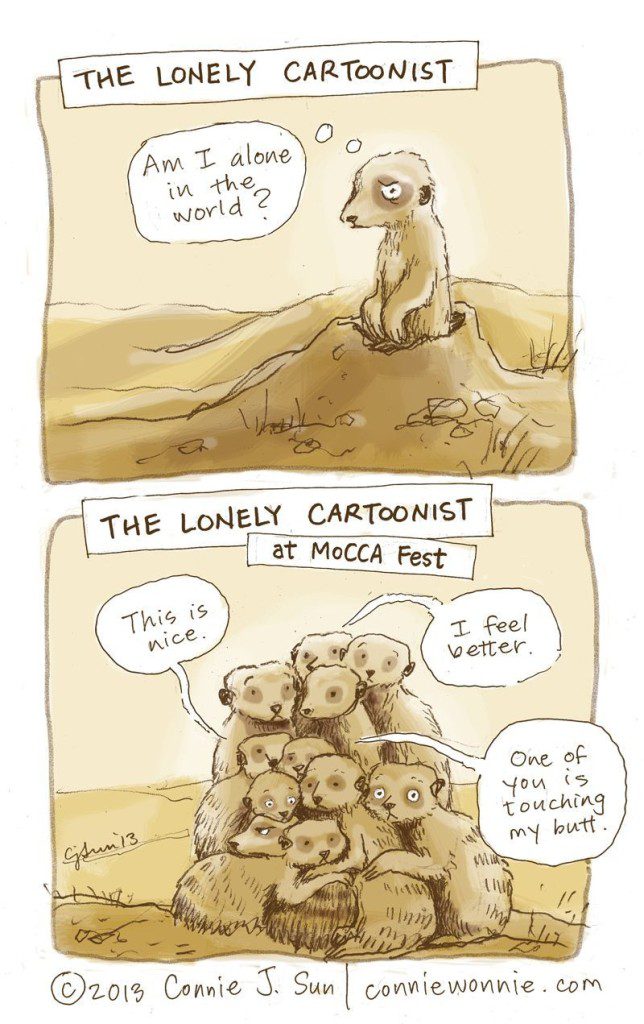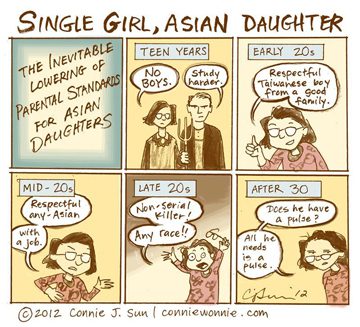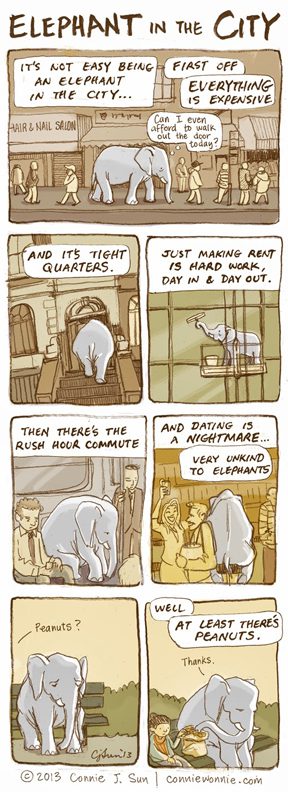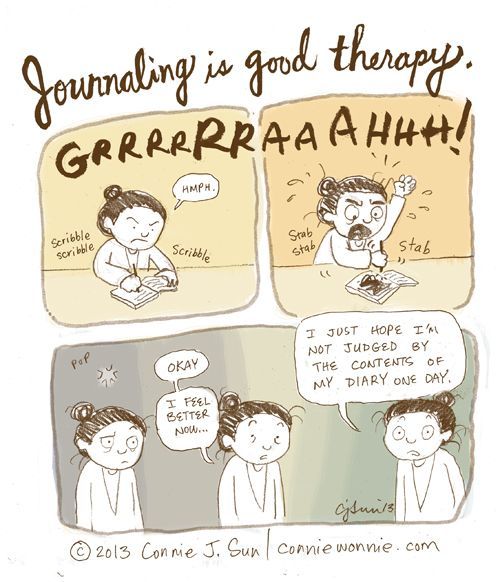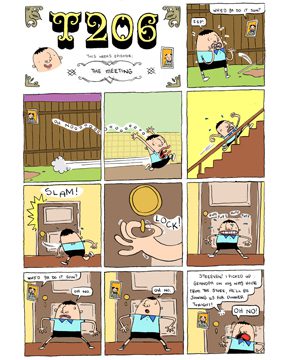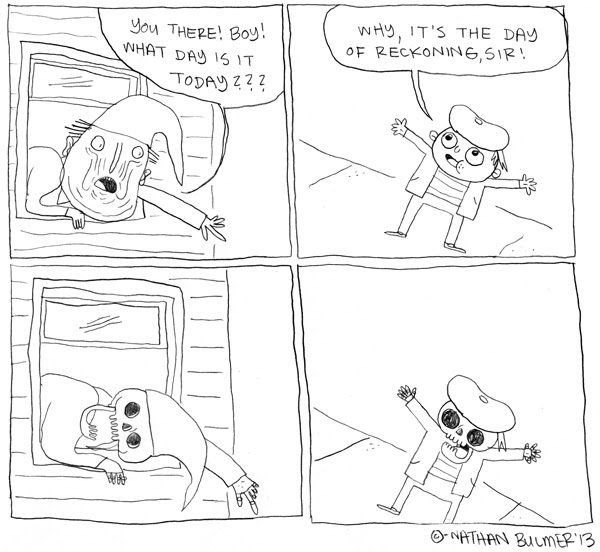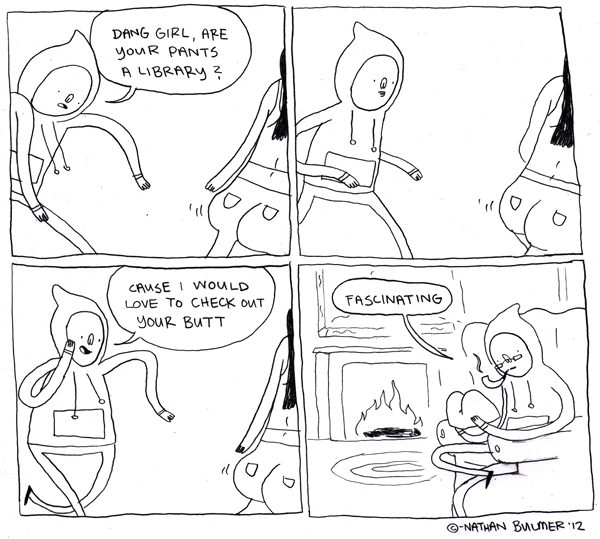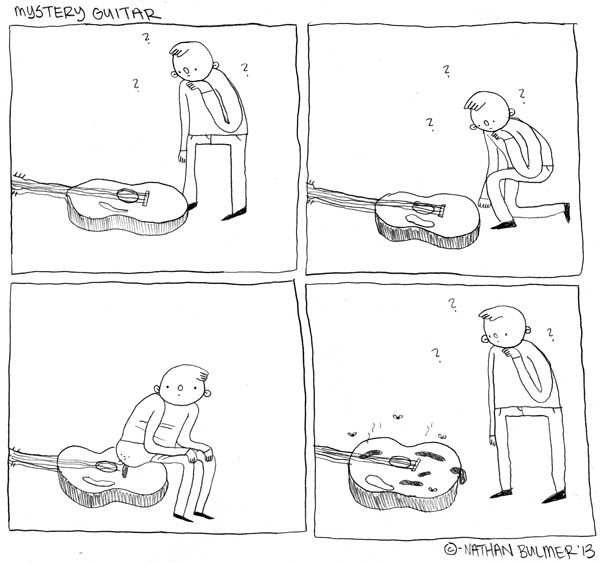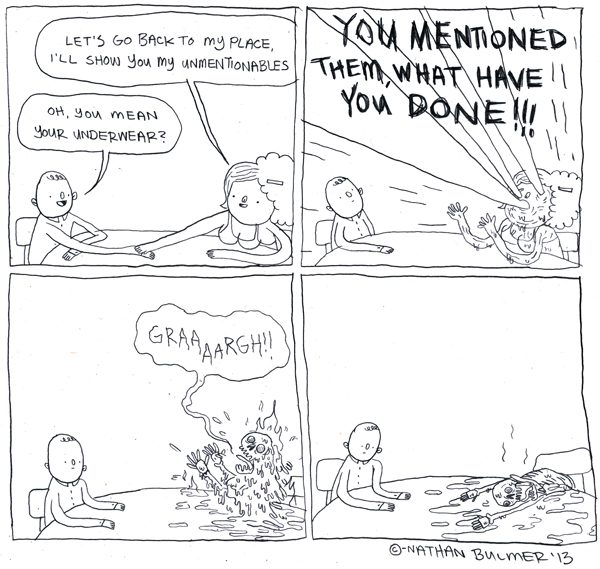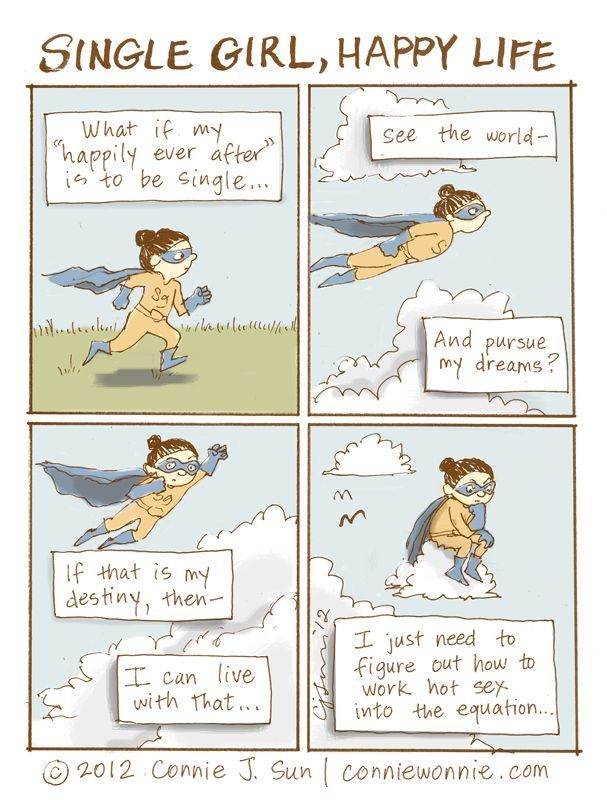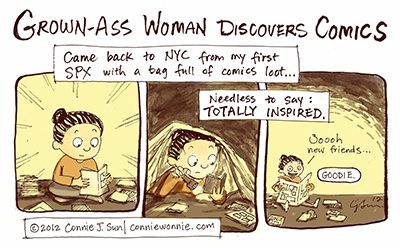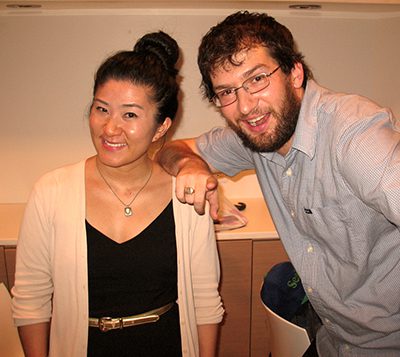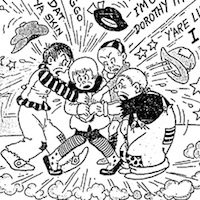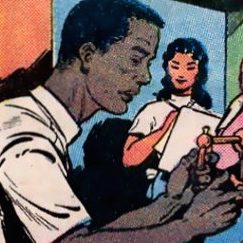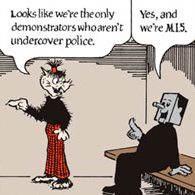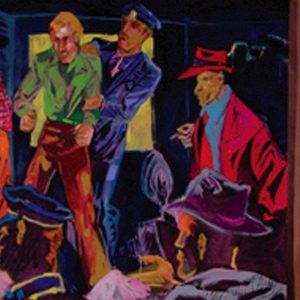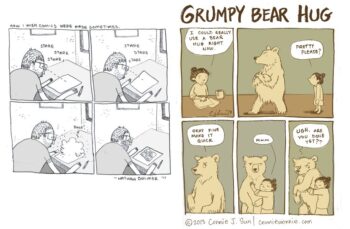
The New York Comics & Picture-Story Symposium is a weekly forum for discussing the tradition and future of text/image work. Open to the public, it meets Monday nights at 7-9pm EST in New York City. Presentations vary weekly and include everything from historical topics and technical demonstrations to creators presenting their work. Check out upcoming meetings here.
This week’s presentation was given by cartoonists Connie Sun and Nathan Bulmer. Though their work is aesthetically divergent, both artists are equally committed to posting their comics on a daily basis. After presenting their respective work, they sat down together to discuss the joys and trials of imposing a daily deadline on oneself. Connie Sun’s comics can be found on her blog Connie to the Wonnie and Nate Bulmer’s work can be found at Eat More Bikes and his book of the same title is now out from Koyama Press.
Connie Sun:
Connie Sun began the talk by describing her daily comics blog Connie to the Wonnie: An Illustrated Status Message a Day. She pointed out that her twitter handle neatly describes what she does: NYC Cartoonist who works in HigherEd by day. Single Girl, Asian Daughter™. Loves creatives, comics & good stories. Cartoons daily, Mon-Fri. Though that seems a succinct summary, Sun pointed out while presenting screenshots of her blog that she has no real brand. She is merely figuring things out as she goes along, creating and discovering is part of the experience of finding her own voice through cartooning.
Sun posts her comics five days a week and has been at it for two years. She described what she does as a “journal comic” with some observational elements. She wakes up at 6 every morning, makes tea, then sketches, draws, scans, colors if there is time, and posts all before she leaves for work at Columbia where she is the assistant director in a Conflict Resolution Master’s program. From beginning to end the whole process takes about an hour and a half. She is as consistent as possible in her dedication to the deadline, but also is learning to be forgiving of her process.
Sun’s first year of posting was fraught with apprehension and fear. She felt it was somehow presumptuous to be a cartoonist and could barely call herself an artist. It was a year of getting over her perfectionism and accepting that she was “in training”. Since she sees these cartoons as her journal, she benefits from the therapeutic effects of addressing, in a public forum no less, her various insecurities and fears.
If her first year of cartooning could be defined by a search to find herself, then the second year could be defined by finding others just like her. By 2012, Sun was attending this very symposium and meeting fellow comic artists. She also described the joys of discovering SPX and MoCCA Fest. For Sun it was an education in comics and she has found the community encountered at events like these deeply inspiring and supportive.
After two years of work, Sun has noticed a few themes emerging in her work. First there is the “Single Girl” character/theme which is naturally a useful device for exploring romantic frustrations. Initially, it was meant to be a throw away bit, but at the encouragement of those who attended her symposium talk in 2012, Sun has continued to explore the trope and finds that it yields interesting material. The second theme Sun described is her “Asian Daughter” theme, which often includes her real-life parents as humorous characters. Much of these themes emerged unconsciously, the result of her attempting to understand her own point of view and then, in turn, share that experience with the world. The cartoon below elicited so much aggravated and excitable feedback that Sun concludes that “the internet is crazy.”
The third theme grew out of her natural fondness for animals. Sun spoke about her love of bears and elephants and how this particular theme found its way into a recent issue of The Brooklyn Rail.
Sun spoke about her worries regarding the nature of her work and wondered aloud where she would take things next, even opening it up to the audience. Though she feared that the journaling method could be too navel-gazing at times, the journey has generally been rewarding as she succeeds at becoming more in touch with her emotions. Before she began, she was unsure how she felt much of the time and this approach to her art allows her to her emotional perspective.
Nathan Bulmer:
Nate Bulmer started by introducing himself and his comic’s blog Eat More Bikes, where he has been posting a comic, daily, for the past three years: “Monday, Tuesday Wednesday, Thursday, Friday; all the days you know, I am making a comic.”
Bulmer described how he came out of a printmaking background in the Art Institute of Seattle before moving to New York to earn his MFA in Illustration at The School of Visual Arts. Mark Newgarden was his thesis advisor and had a huge influence on his work there.
When Bulmer graduated, he had “zero direction” and so, as an attempt to create structure out of the void, he decided to create a piece of art and post it daily on his blog. At first, the posts were very illustration-oriented, as this was the environment he came from, but they slowly began to evolve into more text-heavy and cartoony gags.
After Bulmer secured a nine-to-five job, he felt the constraints on his time and gave up coloring his pieces. Since then he settled on a consistent daily format: four panel, black and white comics.
Bulmer explained that the hardest part of this process is coming up with ideas. He tries to walk home from work almost everyday, and during that four mile trek from Manhattan, over the Brooklyn bridge to his home, he tries to stir up something in his mind, taking copious notes on his phone along the way.
He described his process as often starting with a mundane object and then skewing the very idea of that thing, challenging, severing or warping pre-conceived notions we associate with that object. He also draws inspiration from overheard conversations. Bulmer admitted to not being afraid of a bad idea: “Putting up crap ideas is a motto I live by. If it funny enough for me it is probably funny enough for the internet.”
Bulmer eschews the notion of playing to an audience. When told by an online commenter that he “gives art a bad name” (in reference to the comic below) Bulmer merely felt validated that someone called what he makes “art.”
Bulmer showed the audience slides of his workspace as well. He adheres to a very simple drawing process. He uses paper, pen and draws on top of a piece of cardboard backing from an old watercolor pad. Then he scans, makes small adjustments on Photoshop, and posts the piece immediately.
Discussion:
After the slide presentation both Bulmer and Sun sat together to discuss their different approaches to the daily comic format. Sun referred to it as a “duel,” but no one was hurt. Sun began by admiring Bulmer’s strong internet presence, and pointed out that he has over 82,000 Tumblr followers. While Bulmer accepted her praise, he admitted that it was a long process that required not simply consistent posting, but also intensive networking. He submitted repeatedly to blogs and forums he admires. Some traffic is acquired through word-of-mouth, but a lot of it is gained by the distribution, mostly by hand at conventions, of hand-made mini-comics. The effort has paid off as he is a featured comic artist on Tumblr and his comics regularly appear on Reddit. Those cartoons can garner up to a million hits each.
Despite having a large audience, Bulmer reiterated his point that he tries to stick to the philosophy of creating comics based on “whatever made me laugh that day.” He feels that keeping an audience in mind during the creative process is dangerous territory. Then he turned to Sun and inquired whether she searched for balance between what she draws in an attempt to please readers. Sun responded that she doesn’t really keep an audience in mind either: “I wake up in the morning and say ‘This can be anything I want it to be … I just have to get it done.’”
Bulmer asked if Sun edits herself in anyway. She said that other than the time constraint, her only criteria is that she work through the feeling at hand. Sun said that some days she is simply angry or bitter, but that her motivation is to get to the “other side” of the feeling, through to the humor, to discover the source. In a large sense it is a therapeutic experience.
Sun continued to commend Bulmer for creating a world where “anything can happen,” a world that can be both very dark and very free. She followed up by asking if there is any thing he would not touch. Bulmer neatly replied “no chain-saw rape.”
When asked how long the actual drawing takes, Bulmer said his process can take anywhere from 20 minutes to three hours. He is also deeply devoted to posting every single day no matter what. In the past three years he has only refrained from posting once and that was when his mother-in-law passed away. Even for his wedding and honeymoon, he prepared in advance three and half weeks worth of daily comics to cover his absence. The result of this work ethic is that he has now created over 1000 comics.
When the discussion turned to current and past influences Sun listed many: Blankets, Calvin and Hobbes, Peanuts, Jules Feiffer, Crockett Johnson, Norman Rockwell, and lots and lots of stand-up comedy. Amongst those cited by Bulmer were: Robert Crumb, Scott Campbell, Michael DeForge, Jack Kirby, Bill Keane, giant Rueben’s paintings, and tons of movies to inform his timing.
When Sun was asked how her project has changed her life she laughed and said, “my mornings used to be more leisurely.” Though her daily goal is to get her comic up before she leaves for work she will sometimes retouch a black and white comic she feels needs coloring and does not post on weekends or when she travels. As she put it those are her “non-machine times.”
Both artists reflected on the way their need to constantly create has informed the quality of their days. Bulmer noted that it makes him more observant. Something can happen to him and months later it will find its way to his blog so almost everything has potential. Sun pointed out that using her own life as material for her art has created a sort of coping mechanism. She deals with life better knowing that almost any experience can become a comic. Their experiences are fodder for either comedy or therapy, but either way, they draw it out of themselves, get it on paper and out into the world. Every day.
***
Image 1: Connie Sun, 2011
Image 2: Connie Sun, 2013
Image 3: Connie Sun, 2013
Image 4: Connie Sun, 2012
Image 5: Connie Sun, 2013
Image 6: Connie Sun, 2013
Image 7: Nathan Bulmer, 2010
Image 8: Nathan Bulmer, 2010
Image 9: Nathan Bulmer, 2013
Image 10: Nathan Bulmer, 2012
Image 11: Nathan Bulmer, 2013
Image 11: Nathan Bulmer, 2012
Image 12: Nathan Bulmer, 2013
Image 13: Connie Sun, 2012
Image 14: Nathan Bulmer, 2012
Image 15: Connie Sun, 2012
Image 16: Connie Sun and Nathan Bulmer after the talk, 2013
***
About the author: Sophia Wiedeman is a comic artist and author of The Lettuce Girl. She lives and draws in New York city. She now wakes up every morning thinking, Connie Sun has already written a comic today. You can see her work here.

